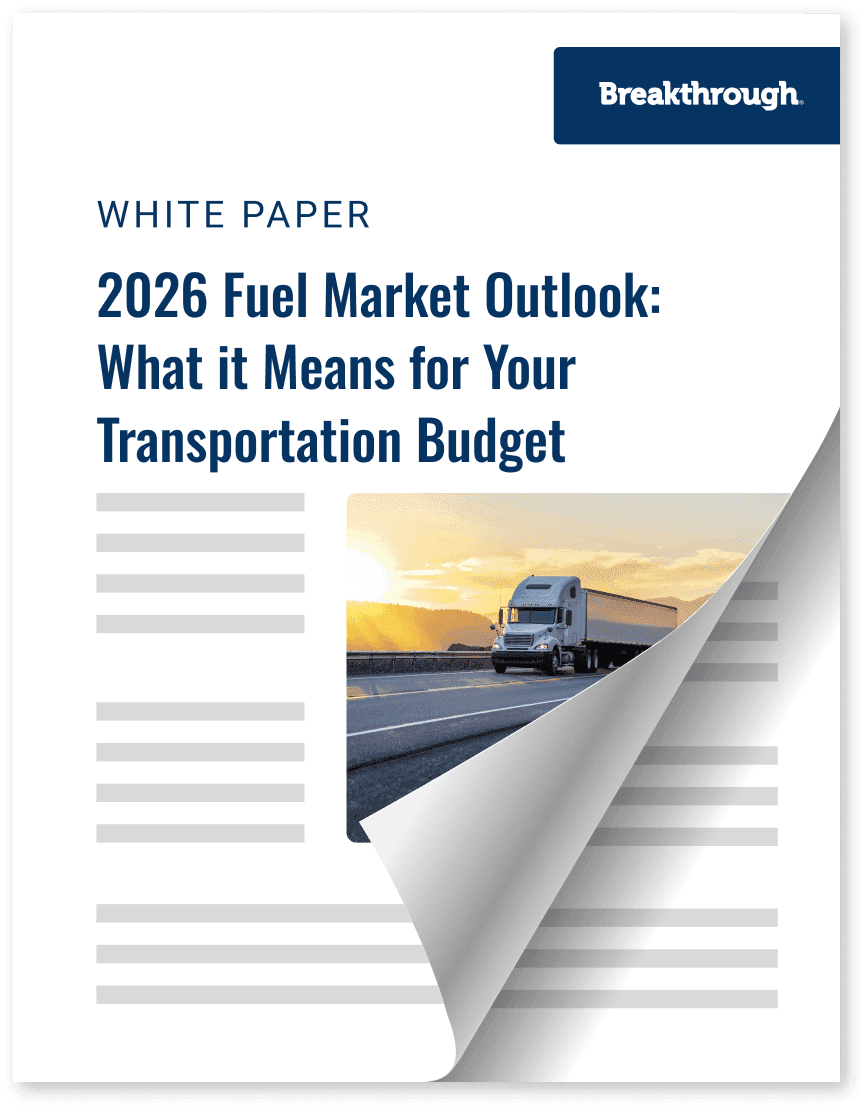2026 Fuel Market Outlook: What it Means for Your Transportation Budget

Trending
Top Posts
7 min read
December 13, 2019

Share:
Table of contents
Browse the table of contents to jump straight to the part you’re looking for
Mexican President Andres Manuel Lopez Obrador (AMLO) completed the first year of his six-year presidential term at the end of November 2019. His inauguration in December 2018 was preceded by widespread optimism that the radical leftist candidate would execute campaign promises focused on the betterment of Mexico’s economy and its people. AMLO hoped to tackle corruption and poverty, eradicate barriers surrounding social justice and equality, and revitalize the economy through supporting government-affiliated organizations like the state oil company, Pemex.
Now after just over one year, AMLO has laid a foundation for the remainder of his leadership. And while the consensus is that consumers generally approve of AMLO’s progress and direction, a less certain future revolves around the energy market and its contribution to Mexico’s economy. That said, Mexico’s fuel market experienced an unprecedented change in AMLO’s first year, with 2019 marking the first time the original goals of deregulating the fuel market finally started to become a reality.
Petroleum theft continues to be a problem in Mexico. Rising fuel prices increase the attractiveness of illegally consuming, procuring, and selling petroleum. This problem was put under a microscope at the end of 2018 and into early 2019 when a drastic rise in illegal pipeline taps triggered widespread fuel shortages nationwide. Imported supply from the U.S. and domestic products from Mexico’s six refineries grew increasingly vulnerable to theft, placing national energy security, fuel price volatility, and mitigation strategies on a pedestal.

As a result, AMLO launched an anti-fuel-theft campaign that established a national security force, shut down key pipelines, and increased reliance on tanker trucks to fulfill orders to stations. This strategy was met with pushback due to the supply chain disruptions it entailed. Yet, in the time since, the campaign helped petroleum theft return to a more manageable state, allowing fuel prices to give back over half of the gains experienced in the first quarter. This also let fuel prices regain their connectedness to broader energy market trends. The fundamental problem of fuel theft, however, remains on the government’s radar.
Fuel market regulations like the International Maritime Organization’s 2020 sulfur cap and global initiatives like the Paris Climate Agreement have heightened the industry’s need to shift to cleaner fuel consumption. At the end of 2018, Mexico’s government announced it would ban high-sulfur diesel use to more closely align with the climate efforts of some of the more progressive economies. But operational and logistical constraints – like insufficient pipeline networks and low-complexity refineries – have hindered Mexico’s ability to completely replace higher-sulfur diesel with that of ultra-low sulfur specifications. Pemex has begun refinery overhauls to address these challenges, but financial complications and regulatory delays have not made this an easy undertaking.
Pemex has entered a legal battle with the government to indefinitely suspend the mandate, arguing the only way Mexico would be able to satisfy demand is through increased imports of compliant fuels. Higher imports contradict AMLO’s goal of becoming more energy independent, so balancing that with the fact that Mexico aims to aggressively adapt its fuel requirements will surely remain a relevant legislative topic in years ahead.
Fuel market liberalization at the end of 2017 opened the door for non-Pemex brands and private investment to infiltrate Mexico. The goal was to cede dominance from Pemex and allow private companies to compete in all stages of the energy supply chain, regardless of Pemex’s legacy ownership of most of the country’s energy assets.

By creating a free market environment, investment in fuel infrastructure and related projects has taken off, manifesting in the creation of non-Pemex branded fuel stations nationwide. Adding fuel storage capacity remains a key focus area for AMLO to mitigate supply challenges in the event of worsened fuel theft or refinery outages. Similarly, lowering Pemex’s retail market share has been important in ensuring fuel price volatility is not dictated by one stakeholder. Since AMLO took office, Mexico’s fuel stations have diversified to the point that over 30 percent of retailers are now non-Pemex, with a significant number of private stations planned in the next few years.
A common theme with Mexico’s fuel market prior to liberalization and AMLO’s presidency was that prices historically only moved in the upward direction. This was primarily due to Pemex’s sustained dominance in the upstream and downstream areas of the energy sector, creating muted and one-dimensional fuel price volatility. But as private brands continued their expansion under the belief that Mexico will remain a high-growth market, the objectives of 2014’s energy reform quickly materialized.
The rise in competition for Pemex helped spark a transformation in Mexican diesel prices at the same time AMLO took office. December 2018 marked the first time monthly average diesel prices had decreased since market liberalization at the end of 2017, with a similar result occurring seven more months in 2019.

Part of this can be attributed to Mexico becoming more of a free market as the year progressed due to the government’s less frequent intervention. This has allowed fuel price behavior to depend more on broader energy market fundamentals, though a unique tax structure still grants the government power to stabilize prices during periods of escalated price turbulence. AMLO’s fuel-price-inflation pledge, which ensures fuel prices will not increase beyond the country’s targeted rate of inflation, also factors into the trajectory of fuel prices, offering an artificial ceiling during months of upside price pressure. In total, fuel price decreases since AMLO took office are evidence of the fuel market’s change, which is likely to persist as the supply chain continues to evolve.
Regional fuel price distortion across Mexico – at the station and state level – is further evidence of the country’s varying energy supply chain dynamics under current free-market ideals. In the United States, tax differences are one of the most significant determinants of geographical fuel price variance. In Mexico, however, a wide range of transportation costs create the largest price differences for end-users, in addition to a few supply-side market fundamentals that differ by location.

The concentration of downstream energy infrastructure – like ports, pipelines, storage tanks, and refineries – along Mexico’s eastern gulf coast limits the logistical constraints associated with getting fuel products to retailers. In contrast, inland and western stations historically offer higher fuel prices due to the lack of proximity to this infrastructure. This requires a heightened need for fuel deliveries to stations by tanker truck, which is a far less efficient and more expensive alternative. AMLO himself has not directly changed any regional price dynamics, but his national efforts in the energy space have an indirect effect on regional pricing dynamics.
The fuel market developments and price shifts since AMLO took office are encouraging for Mexico’s market growth, future price volatility, and overarching economy. Yet, much progress is still required to make Mexico a truly free market absent of monopolistic behaviors tied to Pemex, considering they remain heavily involved in all areas of the country’s energy sector. AMLO will be tasked with ensuring Mexico’s energy market continues to adapt to the goals set forth by fuel market deregulation while balancing its implications for Pemex given its longstanding contributions to Mexico’s economy.

6 min read
November 20, 2025
Understand the impact of Ukrainian drone strikes on Russian refineries. Learn why diesel prices are volatile and how to protect your budget from market shocks.
Read more
7 min read
November 11, 2025
Discover how fuel management systems cut costs, track emissions, and improve reimbursement accuracy for modern freight operations.
Read more
6 min read
November 10, 2025
Explore how the proposed Union Pacific–Norfolk Southern merger could reshape rail in the U.S. Learn impacts on competition, pricing, and service.
Read more